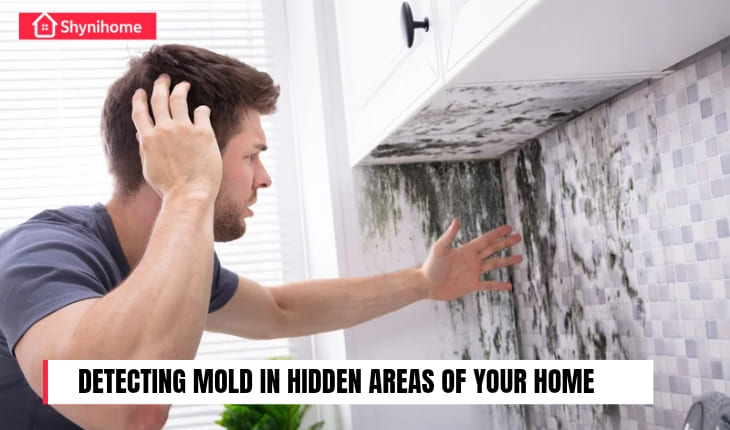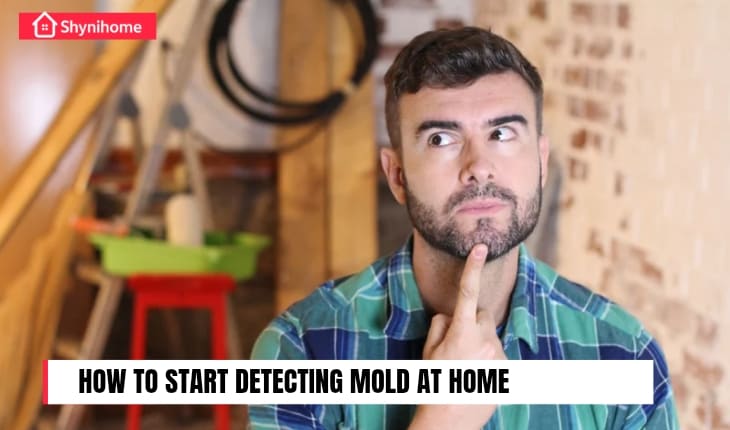
Mold is sneaky. It doesn’t always appear in obvious places like the shower or under the kitchen sink. Sometimes, it hides deep within your walls, ceilings, vents, and even beneath the floorboards — causing damage before you even notice it.
That’s why detecting mold early, especially in hidden areas, is critical for your health and your home’s safety.
Table of Contents
Toggle⚠️ Why Is Mold Dangerous?
Before we dive into how to find hidden mold, it’s important to understand the risks:
- 🫁 Health Issues — Mold spores can cause allergies, respiratory issues, skin rashes, headaches, and worsen asthma.
- 🏚️ Structural Damage — Left untreated, mold eats away at wood, drywall, and insulation.
- 💸 Costly Repairs — The longer it stays hidden, the more expensive it becomes to fix.
Bottom line: the earlier you catch it, the better.
👉 Also Read: How to Fix Cracks in Concrete Driveway: Step-by-Step
🕵️♂️ Common Hidden Areas Where Mold Grows
You may be surprised by how many places in your home offer mold the perfect environment to grow. Here are the top hidden zones to check:
- 🚿 Behind Bathroom Walls (especially near tubs and showers)
- 🧺 Under Laundry Machines
- ❄️ Inside HVAC Ducts and AC Units
- 💨 Behind Drywall and Wallpaper
- 🪟 Under Window Sills
- 💧 Beneath Leaky Sinks or Toilets
- 📦 Inside Closets With Poor Ventilation
- 🧱 In Basements and Crawl Spaces
🔍 Signs That Hidden Mold Might Be Present
Even if you can’t see it, your house will often give you clues. Watch for:
- A persistent musty or earthy odor
- Peeling paint or warped walls
- Dark spots or water stains on ceilings or drywall
- Condensation or moisture buildup
- Chronic respiratory problems or allergy flare-ups among household members
🛠️ How to Start Detecting Mold at Home

1. Use Your Nose First
Musty odors are often the earliest sign. If you smell mold, you likely have mold — even if it’s not visible yet.
2. Inspect High-Risk Areas
Use a flashlight to check inside cabinets, behind baseboards, and near plumbing. Look for discoloration, black or green patches, or signs of moisture.
3. Check HVAC Systems
Remove vent covers and shine a light into the ductwork. Mold inside your HVAC can spread spores throughout your home.
4. Use a Moisture Meter
Mold loves moisture. You can use a digital moisture meter to check hidden areas like wall cavities or subfloors. High readings could indicate water intrusion and potential mold growth.
5. Home Mold Testing Kits
These are available at most hardware stores. They can detect mold spores in the air or on surfaces, but results may not be 100% reliable without lab analysis.
6. Hire a Professional Mold Inspector
If you suspect a serious infestation, it’s best to bring in an expert. They use infrared cameras, borescopes, and air sampling to locate and identify hidden mold accurately.
🧹 What to Do If You Find Mold
- For small surface mold, you can use a mixture of vinegar or hydrogen peroxide and scrub it off.
- For larger or hidden infestations, call a certified mold remediation professional.
- Don’t paint over mold — it won’t fix the issue and can make it worse.
🛡️ Prevention Tips
- ✅ Fix leaks and plumbing issues immediately
- ✅ Use exhaust fans in bathrooms and kitchens
- ✅ Keep humidity levels below 50%
- ✅ Regularly clean and maintain HVAC systems
- ✅ Store belongings in dry, well-ventilated areas
👉 Also Read: Guide to DIY & Home Repair: Fix Your Home Like a Pro
✅ Final Thoughts
Detecting mold in hidden areas is not just about protecting your property — it’s about protecting your health. A proactive approach to mold detection and moisture control can save you thousands in repairs and keep your home safe and breathable.
Remember, mold thrives in silence and darkness. But with the right awareness, you can shine a light on the problem — and stop it in its tracks. 🛠️💨🏠
